Koi, also known as Nishikigoi or Japanese Carp, is a colorful type of Amur carp. Loved for their vibrant hues and striking patterns, koi usually reside in water gardens and private koi ponds across Japan. In addition to symbolizing prosperity, they’re commonly associated with Japanese culture and aesthetics.
While mentions of koi date back centuries, they only developed their dazzling color in the 19th century. This evolution was due to selective breeding, which created several vivid varieties.
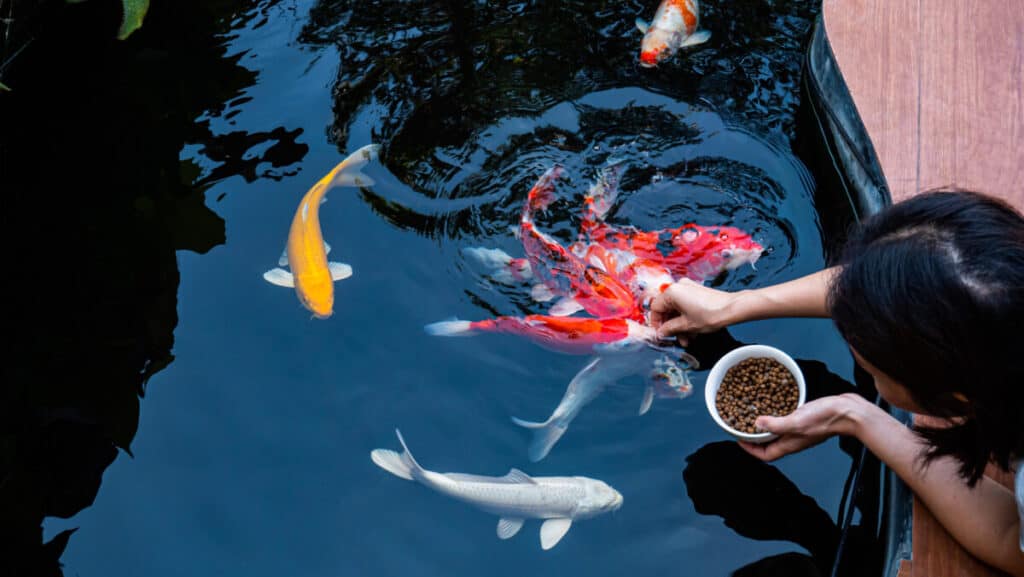
Hobbyists enjoy koi keeping worldwide, and some fish can even sell for more than a million dollars.
Overview of Koi (Nishikigoi)
Koi are sometimes referred to as “swimming jewels” due to the brilliance of their shades and patterns. Their Japanese name, Nishikigoi, is also a homophone in Japanese for the word “affection.” As a result, koi often symbolize companionship and love in Japan.
Unlike other fish kept as pets or ornamentation, koi typically reside in outdoor ponds. The reason for this is two-fold.
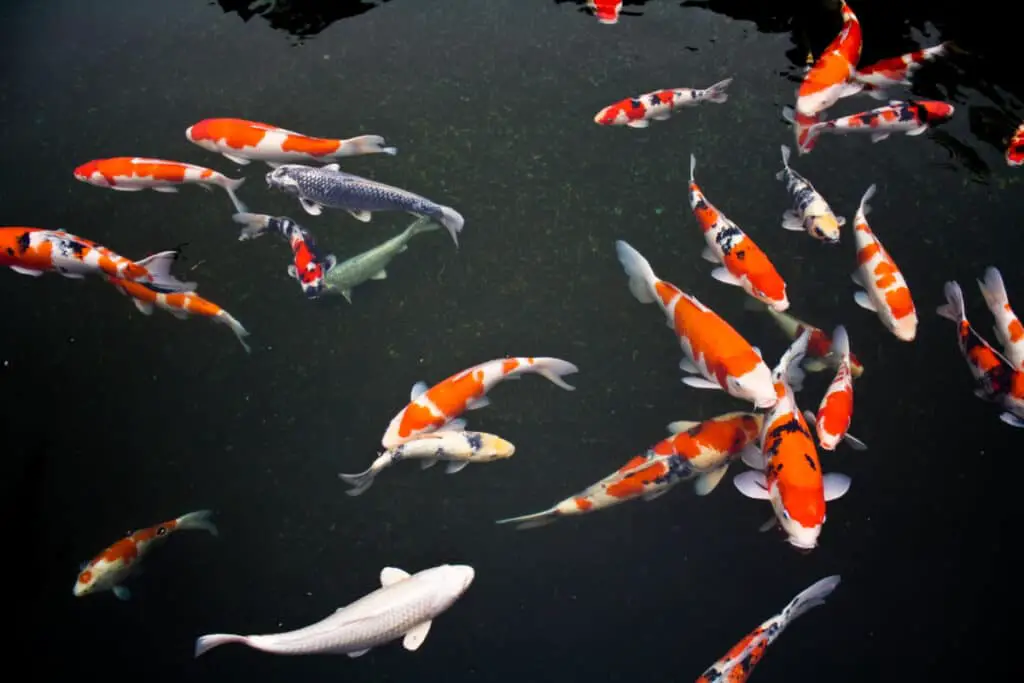
One is that koi can become quite large fish, with some varieties reaching three feet in length. Since a koi’s size further accentuates its beauty, hobbyists don’t want to limit them to small tanks.
Secondly, koi are extremely hardy in Japan’s cold winters. Not only can these fish survive for all four seasons in most temperate regions: they actually thrive outdoors.
Many Japanese artworks and traditions feature koi prominently. And people around the world enjoy strolling around gardens and parks to gaze at these living works of art.
Varieties of Koi
Koi come in over 100 varieties, and breeders will likely continue breeding and cross-breeding to produce new ones. Each of these varieties has distinct colors and patterns.
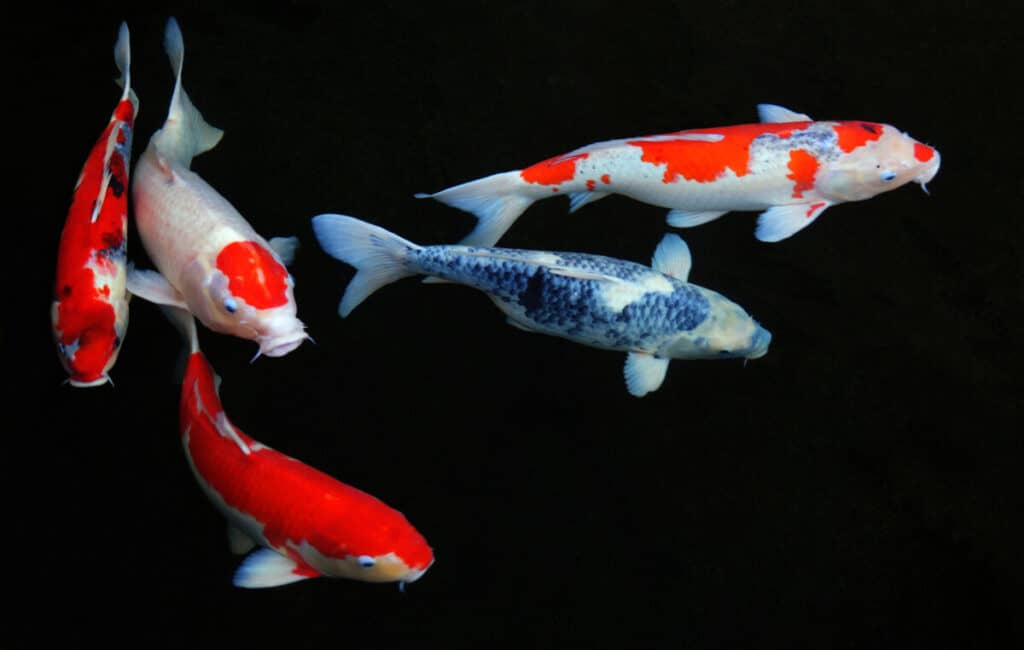
Here are the most well-known and beloved koi varieties:
- Kohaku – The most popular sort of koi, these fish have red and white markings. Their pectoral fins are pure white.
- Taisho Sanke – Another very prominent type of koi. Taisho sanke sport a blend of red, white, and black markings.
- Chagoi – Known for their massive size, these koi are normally a copper-brown color. Some owners claim chagoi are very friendly and will eat gently out of their owner’s hands.
- Hirenga – Coming in various colors and patterns, hirenga koi dazzle onlookers with their long flowing fins.
- Tanchō – Arguably the rarest variety due to difficulty breeding them, tanchō koi sport a red spot on their head that resembles the flag of Japan. As a result, they’re especially prized in the country.
- Platinum Ogon – These jumbo koi have a distinctly metallic sheen. Their silver color can add dazzling flashes to a pond in the moonlight.
- Bekko – These fish are great for those who prefer a more simple, minimalist look. Their scales appear as black spots on a white background.
How to Appreciate Koi
Assessing koi is as much a science as an art. While beauty is subjective, koi hobbyists judge the fish on a few key aspects.
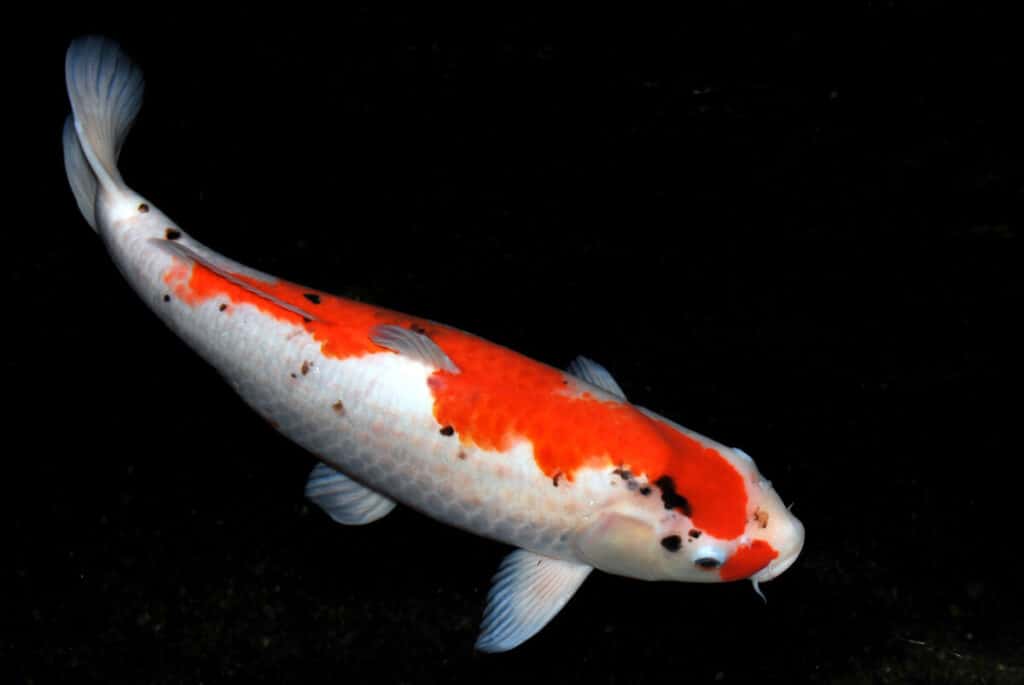
Here are the qualities that hobbyists assess koi by:
- Shape – The most prized koi have a balanced and symmetrical form. Both the head and tail of the body should taper smoothly. Additionally, bigger koi are usually more valuable.
- Pattern – Judging pattern is often specific to the type of koi. Typically, hobbyists desire koi with as few blemishes as possible. Their scales should also appear consistent and smooth.
- Color – The best colors are vibrant and uniform. Generally, hobbyists prefer shades that contrast rather than blend. This is why red on white and black on white are popular.
- Presence and Personality – These qualities are much harder to judge, but some koi will be more social than others. It’s hard to forget a fish that’s both beautiful and friendly.
The best koi might even win the All Japan Nishikigoi (koi) Show, depending on how they measure up.
Such an accomplishment is both impressive and lucrative. The top-rated koi in the past have sold for as much as $1.8 million USD.
Where Tourists Can Find Koi in Japan
Tourists hoping to see koi in Japan are in luck. Koi are found all over the country in public parks and water gardens. Additionally, many homes in Japan maintain private koi ponds.
For the ultimate koi fish spot in Japan, tourists need to look no further than Shimabara.
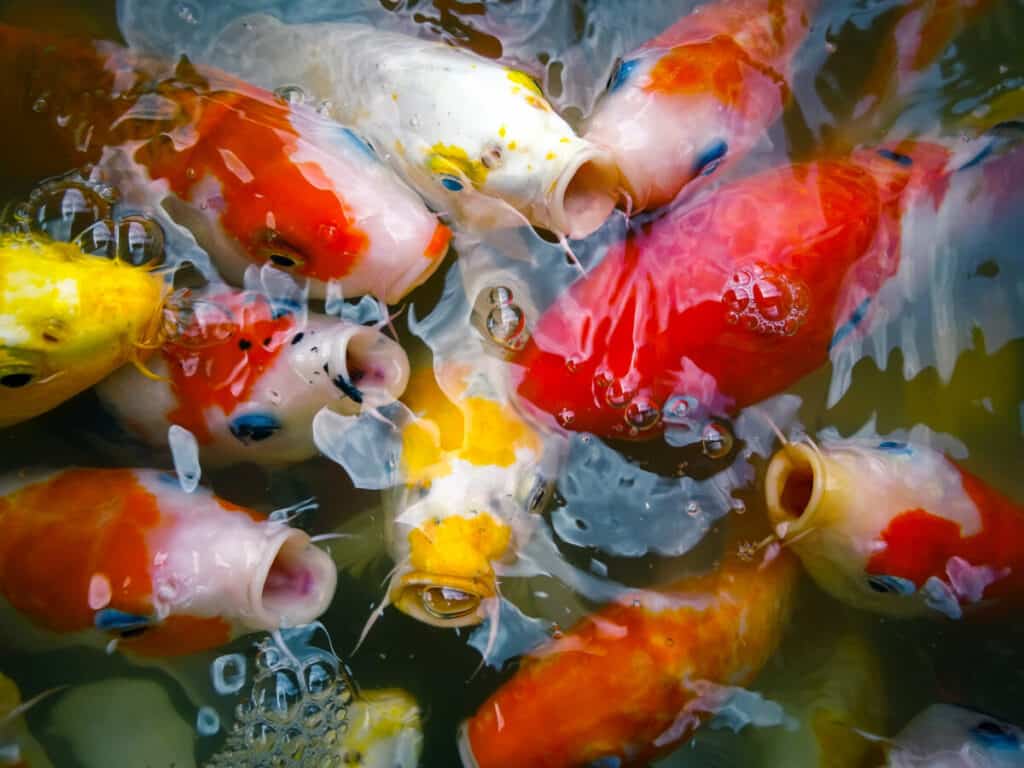
Located in Kyushu, Japan, this city is affectionately known as “Koi Fish Town.” The name comes from the koi-filled channels that run along the city’s streets and buildings. It’s not uncommon to see tourists bend down and pet these docile fish as if they were stray cats.
Natural hot and cold springs are abundant in Shimabara. So for those who want to experience this magical city, numerous onsen (hot spring) inns are available.
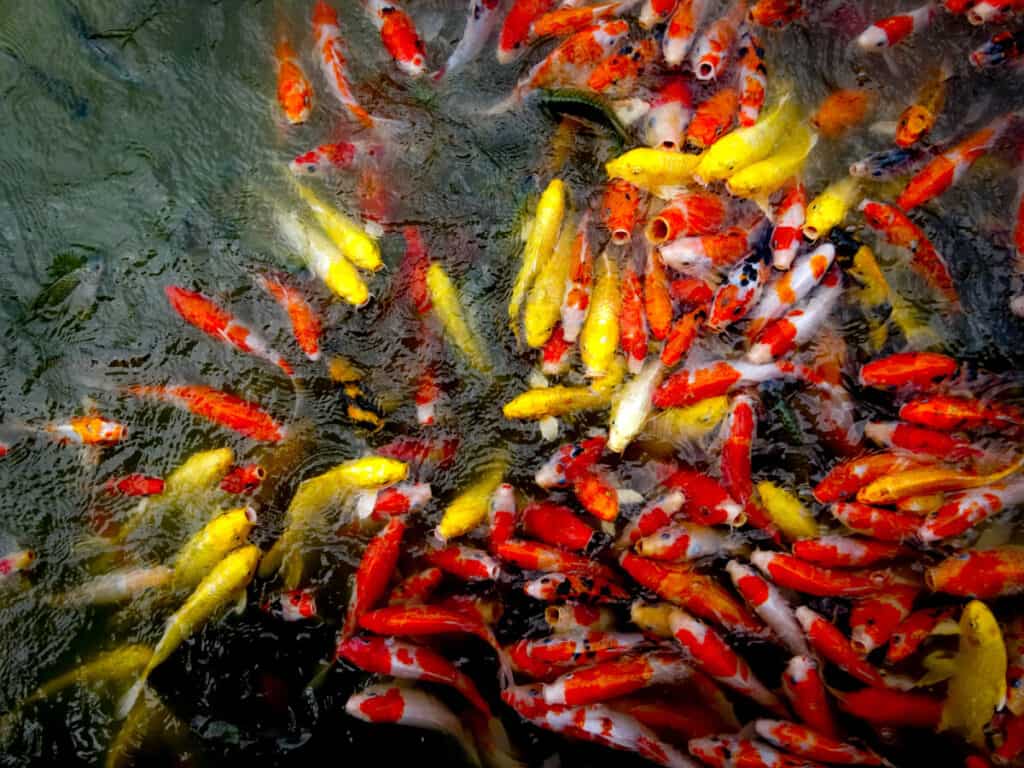
Japanese Koi Farm Matsuda Koi Farm
Visitors to Hiroshima have the opportunity to see the mesmerizing Shukkei-en Garden, which possesses one of Japan’s most tranquil and idyllic koi ponds. Here, visitors enjoy watching these swimming jewels glide through the water in the shadows of bonsai trees. Admittance is ¥260 (~$2.30) for adults.
Koi are available for purchase throughout the country as well. Hobbyists can acquire them directly from a local breeder. Alternatively, a visitor can buy koi from a breeder and sometimes have the fish mailed to their home.
Koi Breeding in Japan
Koi breeding is a major industry in Japan that continues to expand to more customers across the globe.
Some breeders, such as Sakai Fish Farm in Hiroshima, produce the world’s most prestigious koi for collectors. The prices these fish sell for often shock those unfamiliar with the hobby. Sakai Fish Farm’s “S Legend,” a red and white Kohaku koi, sold for a record $1.8 million in 2018.
Sakai Fish Farm Official Website
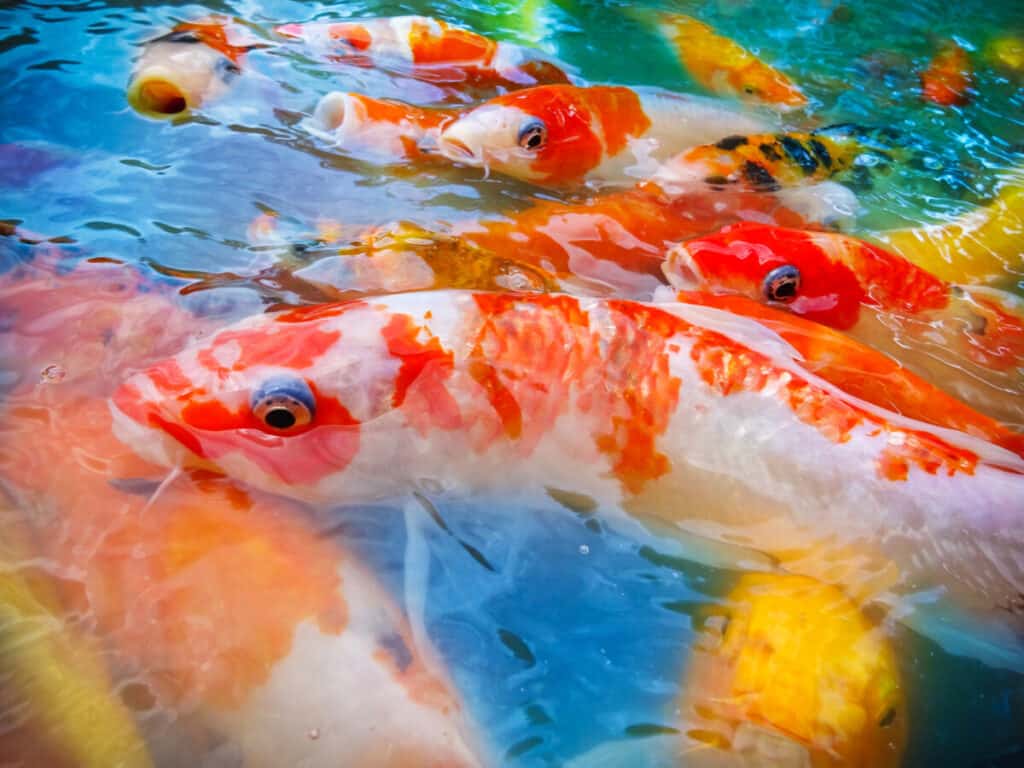
The practice of breeding is also often a source of family pride and heritage. In the case of Sakai Fish Farms, owner Kentaro Sakai inherited the farm and his koi breeding acumen from his father.
It’s not uncommon to drive by koi farms while traveling the country, especially in Hiroshima.
History and Origins of Koi
The history of koi begins far from Japan in the steppes of East Asia. For hundreds of years, Amur carp were fish commonly kept as a source of food.
These fish were a significant lifeline for the inhabitants of the region. They were resistant to cold water and easily bred with little food. Plus, these carp eat the larvae of harmful water-borne insects.
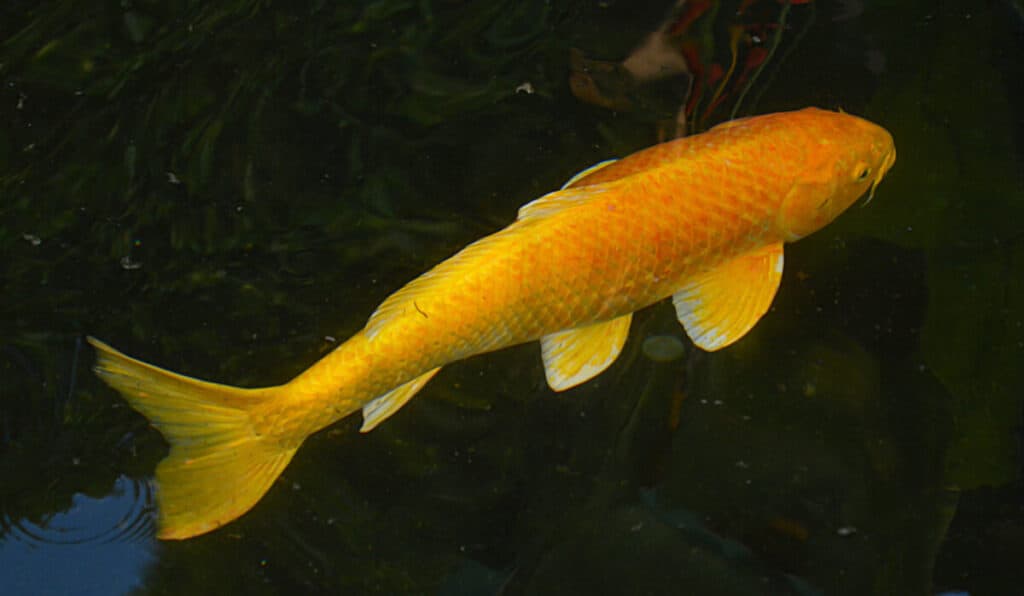
Eventually, Amur carp found their way to Japan as well. However, breeders in the 1800s noticed that some carp had mutations giving them colorful red scales.
Japanese carp farms began selectively breeding these mutations to make ornamental fish. This is when nishikigoi, or koi, became a distinct type of carp. Over the years, the cross-breeding of koi gave rise to new white, orange, and yellow varieties.
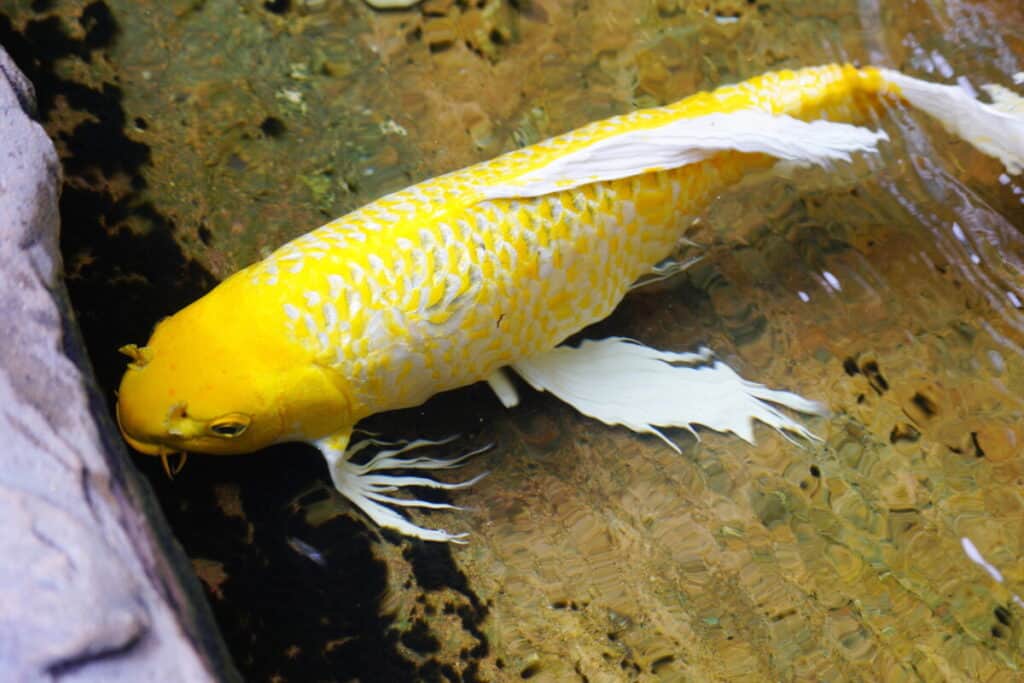
These beautiful koi were kept a secret until their unveiling in 1914 at an annual event in Tokyo. Afterward, the fish’s popularity skyrocketed across Japan.
Today, koi are found in pet shops, ponds, and aquariums around the world.
Koi in Japanese Culture
Despite only emerging in the last couple hundred years, koi are a part of Japan’s national identity. So much so that many westerners associate the fish with serene Japanese streams and mountain ponds.
Koi is a homophone for the Japanese word for “affection.” As a result, they’re often used to symbolize loving bonds and friendship in the country. They also have a strong association with fortune and good luck.
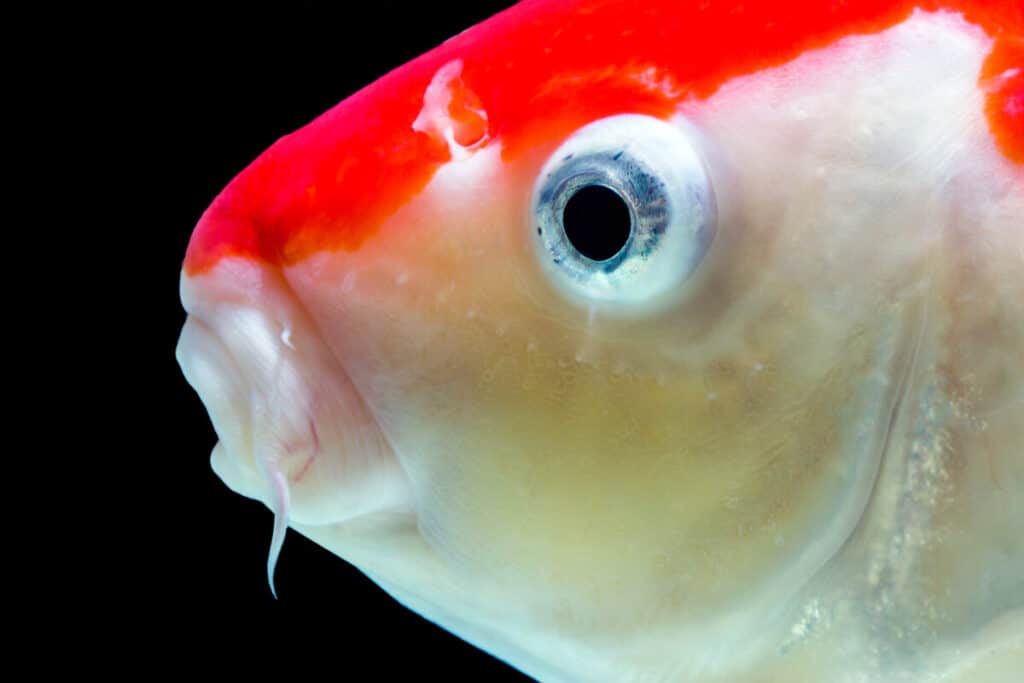
Many Japanese writers have compared the beauty and resilience of the koi to their homeland. And while tattoos aren’t yet common among the Japanese, koi are a common motif for those that have them.
Every year, the best koi breeders compete at the All Japan Nishikigoi (Koi) Show. There, breeders submit what they believe to be their most impressive koi in various categories. Judges then assess them on their shape, colors, pattern, and sometimes behavior or “presence.”
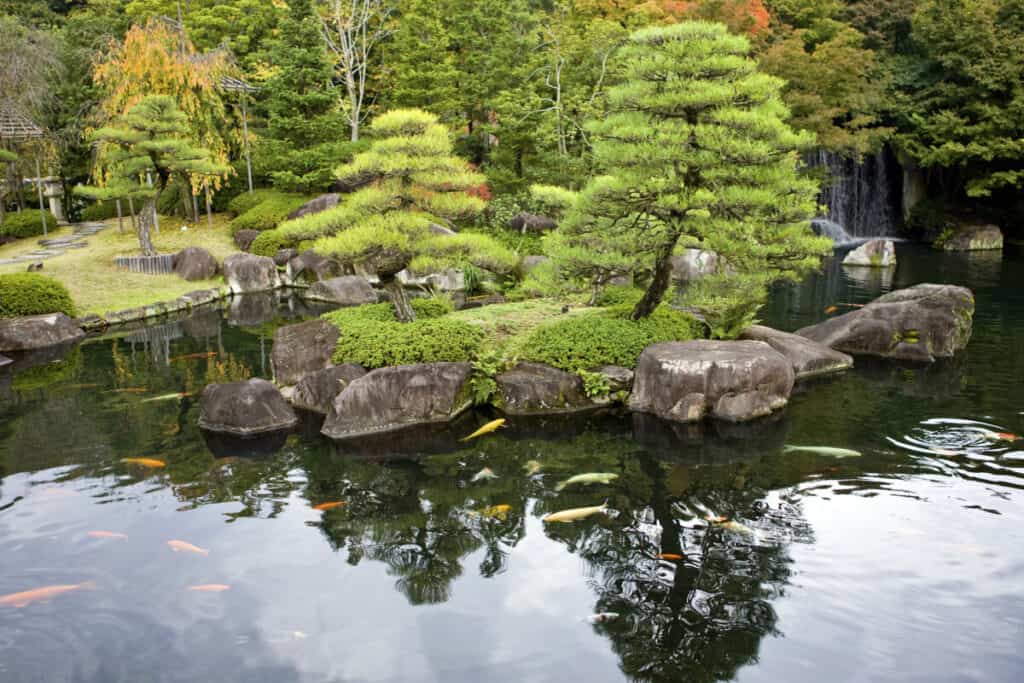
Winning farms generally sell their distinguished koi for immense prices at auction. However, for many dedicated breeders, the honor of being the best in Japan is worth more than any amount of Japanese Yen.
Koi in the Wild
Believe it or not, koi live in waterways around the world. Mostly, this has been due to accidental introduction into ecosystems from hobbyists.
Within only a few generations, the majority of wild koi completely lose their color and revert to the gray-brown color of Amur carp. Dull coloration is necessary for most waterways since vibrant domestic koi have no camouflage or defenses from predatory animals.
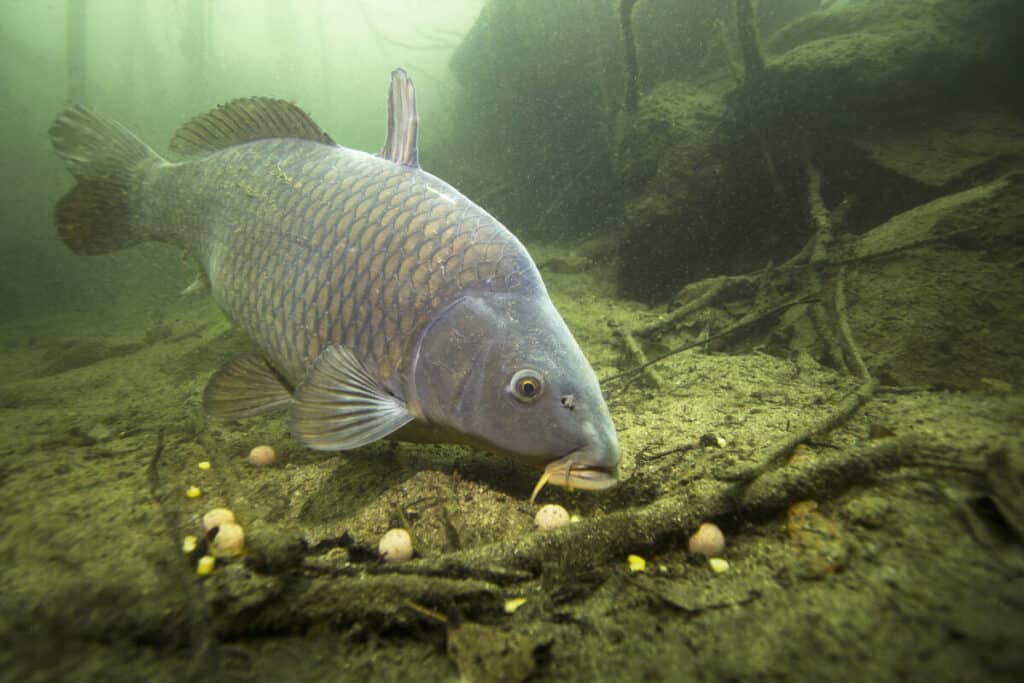
While you might think it’d be great to have more koi around, that’s not always the case.
Koi tend to be a very destructive invasive species. They kick up the substrate, turning clean water undrinkable even for livestock.
However, they’re not all bad. Many golf courses in America benefit from koi in their ponds. In addition to being beautiful, koi are excellent at destroying insect larvae nests. Golfers often have Nishikigoi to thank for keeping away pesky water-borne mosquitoes.










